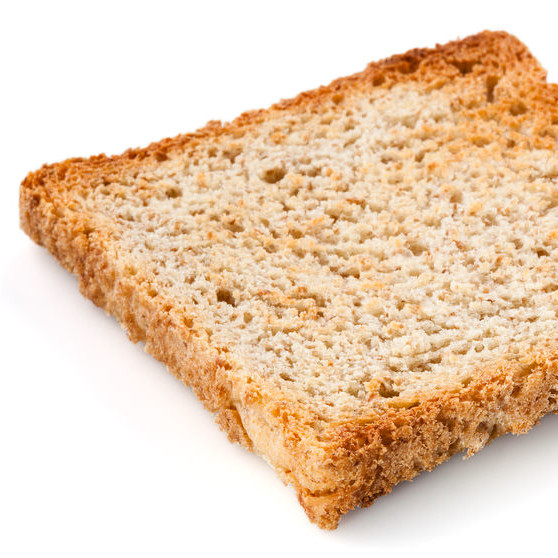
Gluten-free Bread
What is gluten-free bread?
Gluten-free bread is a bakery product made without wheat or any other gluten-containing cereal. It benefits consumers who suffer from celiac disease, gluten allergies or experience gluten intolerances.
Cereals that cannot be used in gluten-free products include:
- Wheat (triticum aestivum or triticum durum) flour (white or wholemeal)
- Ancient wheats (einkorn, spelt, emmer, spelt, Kamut)
- Barley
- Rye
- Triticale
How gluten-free bread is made
Formulating gluten-free bread requires a thorough understanding of the ingredients used to replace the unique functionality and viscoelastic properties of wheat’s glutenins and gliadins. The formulation requires the addition of ingredients that provide:
- Formation of a cohesive gel-like polymeric network or matrix capable of entrapping gas and supporting the expansion of gas bubbles without collapsing.1
- Formation of a wheatless batter or dough of optimum handling properties.
- Crumb formation through starch gelatinization and protein coagulation during baking.
- Water-holding and gas retention through viscosity building and gel formation.
Gluten-free flours used in gluten-free breadmaking
| Cereal, roots and tubers | Pseudocereals | Legumes and pulses | Other flours |
|---|---|---|---|
| Rice flour
Pregelatinized rice flour Potato flour Oat flour Corn flour Millets Sorghum flour Brown rice flour Cassava (tapioca) flour |
Quinoa flour
Amaranth flour Buckwheat |
Garbanzo bean flour
Soybean flour Chickpea flour Pea flour |
Coconut flour
Flaxseed flour Almond flour |
Formulation of white sandwich yeast gluten-free bread
| Ingredient |
Baker’s % (based on flour and starch weight) |
|---|---|
| Sorghum Flour | 12.0 |
| Corn Starch | 12.0 |
| Tapioca Flour | 10.0 |
| Potato Starch | 66.0 |
| Water (110°F / 43°C) | 62.0 |
| Egg whites | 23.0 |
| Unsalted Butter (room temp.) | 15.0 |
| Sugar | 6.5 |
| Cider vinegar (6% acetic acid) | 2.5 |
| Salt | 1.5 |
| Active dry yeast (ADY) | 2.0 |
| Xanthan gum | 1.5 |
| Carob bean gum | 0.5 |
Processing
- Ingredients scaling
- Yeast activation: In a small bowl, dissolve yeast and sugar in warm water. Set aside to foam 5 minutes.
- Mixing:
- Foaming: Beat egg whites until thick and foamy.
- Add dry and liquid ingredients to the egg whites foam.
- Dough mixing: Mix on low speed to gently blend and incorporate dry and liquid ingredients, then increase speed to medium and mix 30 seconds more or until mixture is thoroughly combined and slightly thickened.
- No gluten proteins so no development of a viscoelastic polymeric matrix.
- Panning / depositing:
- Grease 9 x 5-inch nonstick (gray, not black) loaf pan.
- Dust the bottom and sides of the pan lightly with white rice flour.
- Transfer the loose dough to a pan and smooth top with a wet spatula.
- Proofing: Let the dough rise in a proof box (95°F / 70% RH) (35°C / 70% RH) until the dough is level with the top of the pan.
- Topping (optional): Sesame seeds may be sprinkled on top.
- Scoring: With a sharp knife, make three diagonal slashes (1⁄8-inch deep) in loaf so steam can escape during baking.
- Baking: Bake gluten-free loaf bread for 60 to 70 minutes at 190°C (375°F).
- Bake until a wooden pick inserted in the center comes out clean. The loaf is done when it sounds hollow when tapped on the bottom.
- Alternatively, bake until temperature reaches 205°F (96°C) on an instant-read thermometer inserted into the center of the loaf. Final core temperature is only valid for baking at an altitude of 0 feet above sea level.
- Cooling: Remove bread from the oven, transfer the bread to a wire rack, and cool for as long as necessary to reach 30°C (86°F).
Application
Structuring ingredients in gluten-free breadmaking:
| Hydrocolloids and fibers | Protein sources | Starches |
|---|---|---|
|
HPMC (hydroxypropyl methyl cellulose) CMC (carboxymethyl cellulose) Locust bean (carob) gum Xanthan gum Agar Guar gum Alginate Psyllium husk Pee and potato fiber Isolated β-glucans and hemicellulose |
Dried egg whites Dried whole eggs Nonfat dry milk or milk solids Dried fruits, tree nuts Sodium or calcium caseinate Milk protein isolates |
Corn starch Rice starch Tapioca (cassava) starch Potato starch Pea starch Arrowroot starch Pre-gel starches Instant starches |
Enzymatic technology in gluten-free breadmaking
| Emulsifying and foam stabilizing technology | Crumb softening |
|---|---|
| De-oiled lecithin + phospholipase
Xylanase-treated pea/potato fiber |
Maltogenic alpha-amylase2
Maltotetraose amylase |
References
- Casper, J.L., and Atwell, W.A. Gluten-Free Baked Products, AACC International, Inc., 2014.
- Rosell, C.M. “Enzymatic Manipulation of Gluten-Free Breads.” Gluten-Free Food Science and Technology, Blackwell Publishing Ltd, 2009, pp. 83–98.

